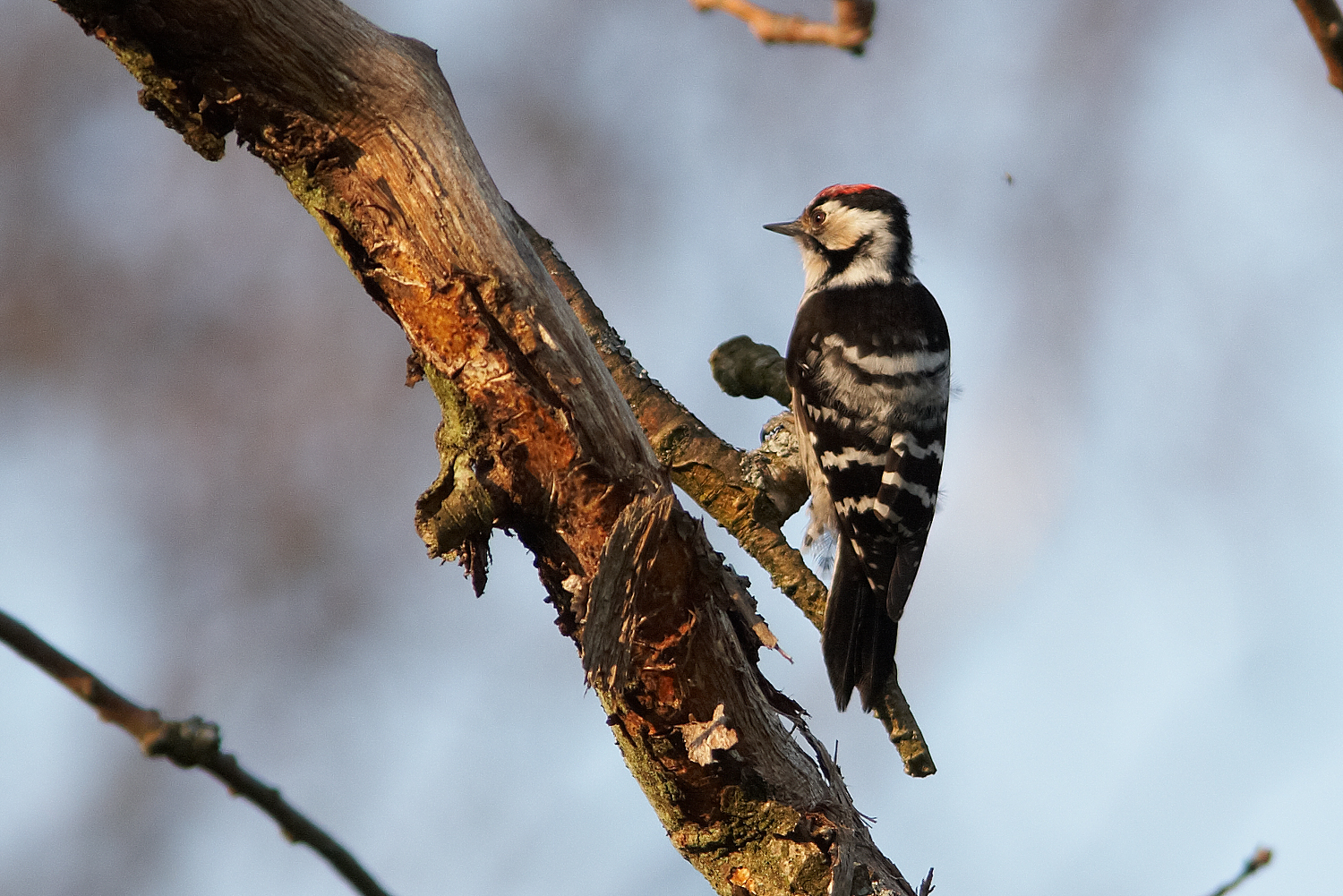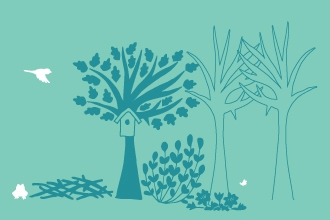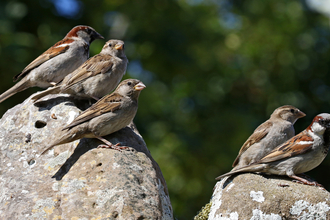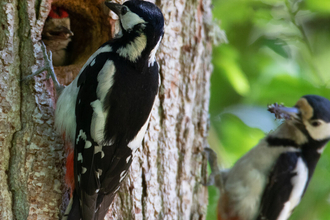10 to 40 strikes a second. That’s what it takes for a tree to resonate and you to notice that there’s a great spotted woodpecker nearby. An unpaired male may drum up to ten times a minute and up to 600 times in a day. I don’t know about you but that would definitely give me a headache – it’s a good job they have a shock-absorber at the base of their skull! I heard my first woodpecker of the year last week when the weather was mild but I'm not sure it would be so keen to be drumming in this week's cold snap.
Drumming woodpeckers
Great spotted woodpecker by Peter Cairns/2020VISION

Great spotted woodpecker family by Jon Hawkins, Surrey Hills Photography
Why go to such extremes? It's all about advertising their existence to potential mates and is the most important contact signal during this courtship. It begins now, in February, but doesn't usually peak until March or even April. Unusually, it is done by both male and female birds.
Once paired, they are usually monogamous for up to about three years and they each take their share of excavating their nest-hole in a tree, incubating the eggs and feeding the young. The excavation of their hole is done more slowly than when they’re drumming so you won't hear the same noise.
It's not just their drumming that's impressive. Their tongues are long and sticky with a harpoon-like tip that they can use to impale their prey. It sounds gruesome but if you put yourself in woodpecker feet for a moment, it makes sense – it's perfect for poking and probing into crevices for insects and into conifer cones for seeds. Their bills aren't used only for drumming and excavating; they can chisel into wood to expose wood-boring beetles and larvae (if you have a nest box in your garden, you'll know the importance of a metal ring around the hole as great spotted woodpeckers are partial to the odd nestling).
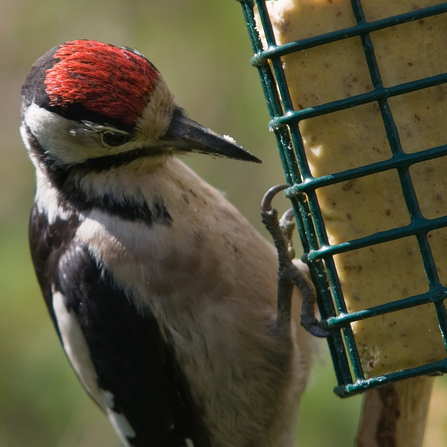
Juvenile great spotted woodpecker Bob Coyle
Numbers of great spotted woodpeckers have been on the rise for some time. Many of you may have noticed that they visit your garden for peanuts and fat balls when perhaps you rarely saw them ten or twenty years ago. Even in urban environments that have plenty of trees around, they're becoming common garden visitors. If you're an armchair garden-watcher or keen to spot what's in your local park, they’re relatively easy to identify. Take a look at their head - youngsters have an all-red crown, males have a band of red on the nape of their neck and females have no red on their heads at all. Despite both being black and white, the patterning is different to their much rarer and smaller cousin, the lesser spotted woodpecker.
As well as listening out for their drumming, listen for their loud calls. Great spotted woodpeckers have a loud 'tchick' call but you might also hear the green woodpecker's 'yaffle'. Very lucky individuals may also hear the slightly slower drumming of a lesser spotted woodpecker. Take a listen below to hear which woodpecker has been drumming where you are.
Great spotted woodpecker
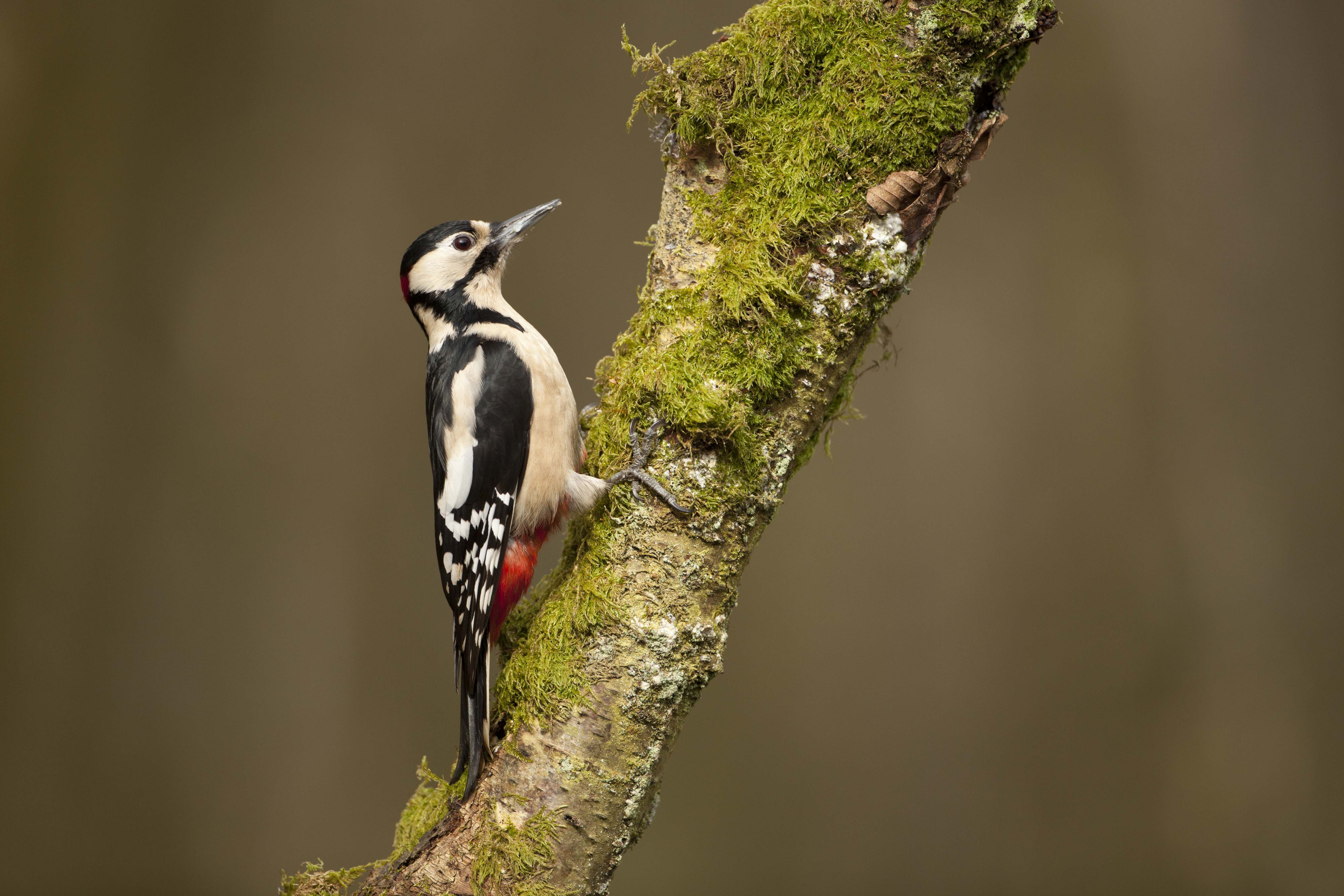
Green woodpecker
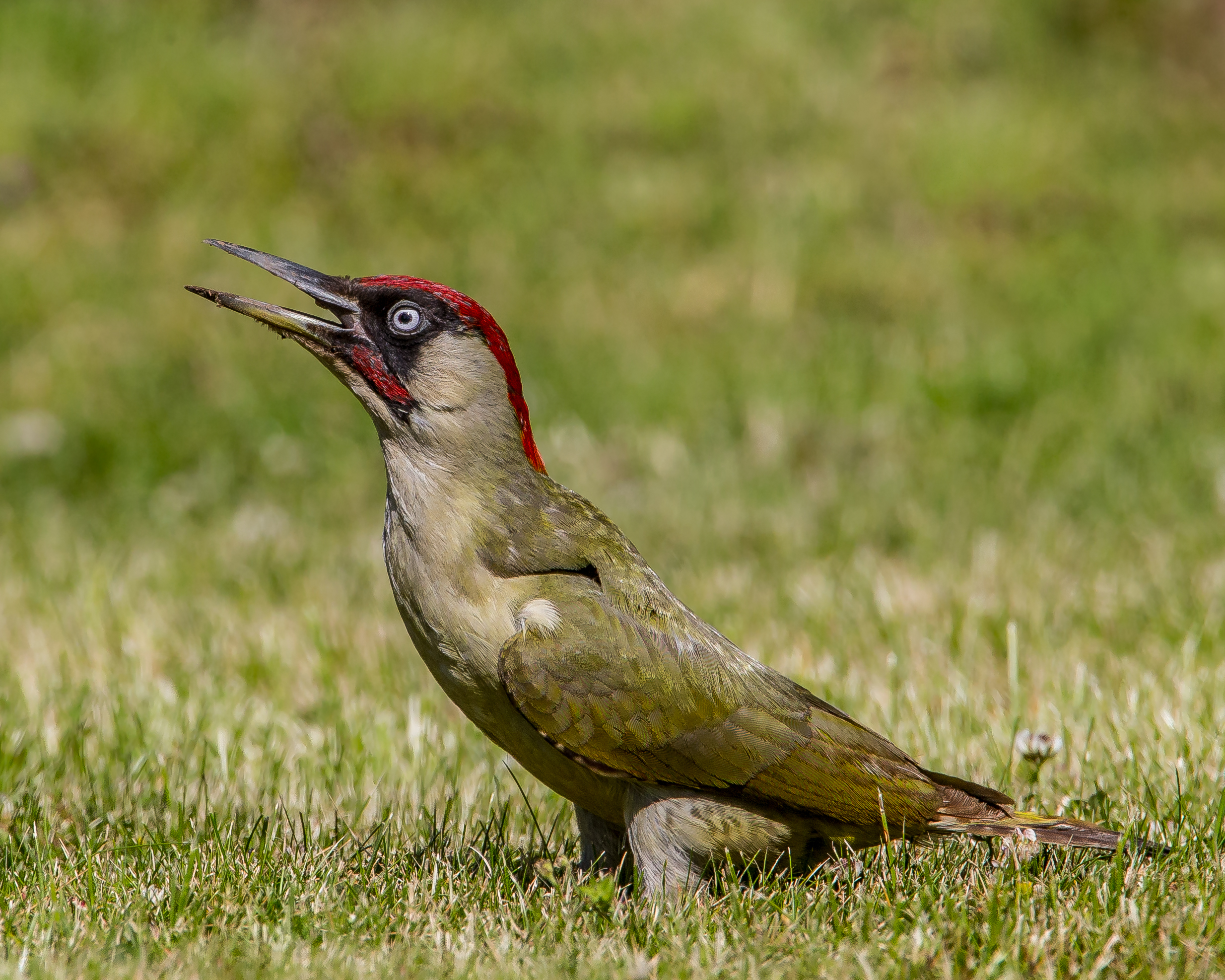
Lesser spotted woodpecker
